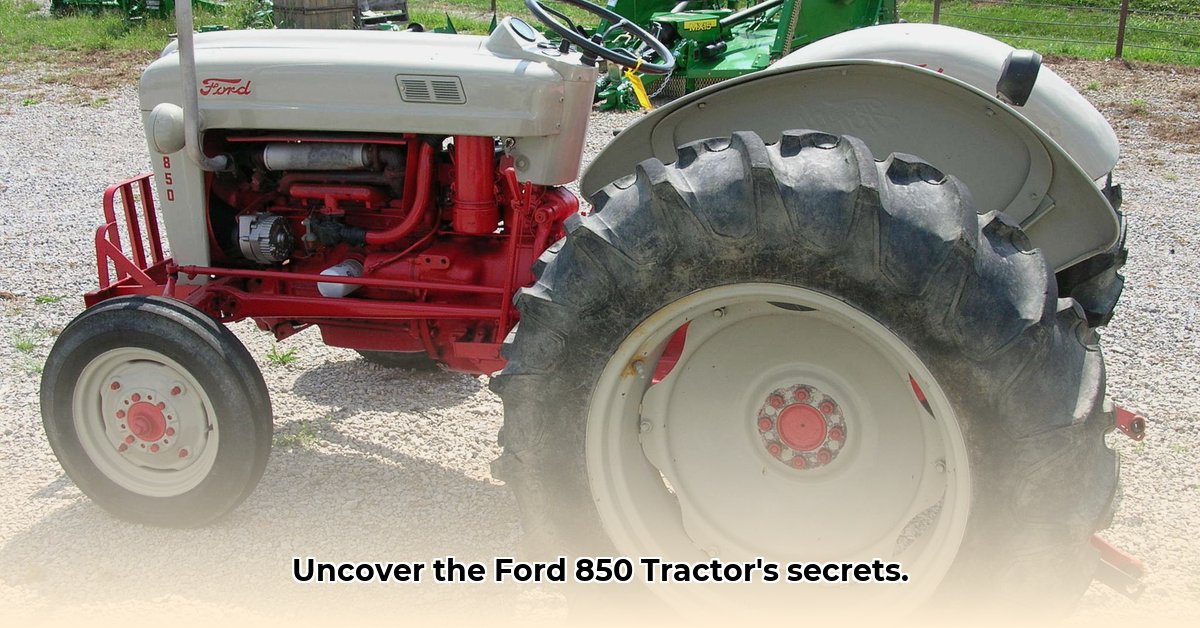
A Mid-Century Workhorse: The Ford 850 Tractor
The Ford 850 tractor, produced from 1954 to 1957, wasn't just another farm implement; it represented a significant step forward in agricultural technology. Its robust design and reliable performance quickly established it as a favorite among farmers. Even today, these durable tractors hold a special place in the hearts of collectors and enthusiasts, a testament to their enduring appeal and resilience. But what exactly makes the Ford 850 so captivating? Let's delve into its history, technical features, and current market value to discover the answers. For more on larger Ford tractors, check out information on the Ford 1500.
Farming in the Fifties: The 850's Context
The 1950s witnessed a dramatic transformation in farming methods. Farmers were constantly seeking more efficient ways to increase yields. The Ford 850 emerged as a powerful and practical response to this demand. While competitors like John Deere and International Harvester offered their own models, the Ford 850 stood out with its reliable performance and robust build. This combination of attributes ensured it found a prominent position within the rapidly evolving agricultural landscape of the time, quickly becoming a popular choice for farmers seeking increased productivity.
Under the Hood: Technical Specifications
The Ford 850's power came from its Ford EAF engine, a 2.8-liter, four-cylinder unit generating approximately 40 horsepower – impressive for its era. A unique feature was the choice between gasoline and liquid propane (LP) gas fuel, providing farmers with flexibility in fuel selection based on cost and availability. The transmission was a 5-speed unsynchronized system, typical of the time, while its 2000 psi hydraulic system provided ample power for operating various implements. This blend of robust functionality and readily available fuel options significantly contributed to its popularity.
| Feature | Specification | Additional Notes |
|---|---|---|
| Engine | Ford EAF, 4-cylinder, 2.8L | Gasoline or LP gas; horsepower varied slightly depending on fuel type and condition. |
| Horsepower | Approximately 40 hp | Actual horsepower may vary due to engine wear and maintenance. |
| Transmission | 5-speed, unsynchronized | Unsynchronized shifting was standard for tractors of this generation. |
| Hydraulic System | 2000 psi | Sufficient lift capacity for common implements of the time. |
| Drive Type | Two-wheel drive | Four-wheel drive was not a standard feature in this era. |
| Brakes | Differential mechanical expanding shoe brakes | A common and reliable braking system for tractors from the 1950s. |
Restoring and Maintaining Your Ford 850
Restoring a vintage tractor is both challenging and rewarding. For the Ford 850, common problems include engine issues (worn piston rings, carburetor malfunctions), transmission leaks, and hydraulic system problems. Parts sourcing requires diligence – online auctions, specialized suppliers, and even scrapyards are potential sources. Essential tools include standard mechanic's tools alongside tractor-specific items. Regular maintenance, including oil changes and filter replacements, is crucial for longevity. Online forums and collector clubs provide valuable support and advice, offering a wealth of shared knowledge and practical assistance.
Value and Collectibility: What's it Worth?
The value of a Ford 850 significantly depends on its condition and originality. A fully restored, original tractor will fetch a considerably higher price than a neglected one. Online auction sites and classified ads provide a general market overview, but attending vintage tractor shows and consulting experienced collectors offers more refined valuation insights. Numerous factors influence value, ranging from its overall condition to the availability of specific original parts.
Conclusion: An Enduring Legacy
The Ford 850 tractor, a product of its time, remains a captivating piece of agricultural history. Its straightforward design, tough construction, and historical significance make it a coveted item among enthusiasts and collectors. While technically simpler than modern tractors, its enduring appeal is undeniable, representing a bygone era of ingenuity and hard work. The Ford 850 stands as a testament to its time, showcasing the remarkable engineering and design of a simpler, yet highly effective machine.